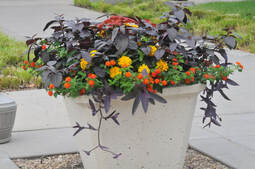
Step 1: What are You Using it For?
Step 2: Understanding Major, Minor, and Specialty Components
Step 3: Mixing and Managing
Last week we covered Step 1. So, here is Step 2. (Ward Upham)
Step 2: Understanding Major, Minor, and Specialty Components
These materials are regionally sourced and often composted to reduce particle size. Some materials are manufactured for the purpose of being used in potting media and many more are by-products of other industries. They are all fine as components but look at the label to understand how much of each “ingredient” is mixed, by volume, into the product you’re purchasing. If that information isn’t on the bag, be wary of purchasing.
· Major components: Bark (or “composted forest products”), peat (this might be defined by type of peat which often refers to the source material or the coarseness), soil (don’t pay for this unless it’s local/regional and advertised as a single-component soil amendment—not as a potting media), manure, sand. Other waste-product alternative materials such as coconut coir and wood fiber are also great to use, but they’re not seen as often in consumer-level products.
· Minor components: Perlite (little white pellets--it’s for aeration, not fertilization), vermiculite (shiny heat-expanded rock pieces), rice hulls (also for aeration with an added bonus of weed control when applied to the tops of containers). These are the most common.
· Specialty components: mycorrhizae (symbiotic fungal organism that, mixed in, can be very beneficial in a container system by expanding the root capacity to take up nutrients and water, it’s less effective in field soil where these organisms are already abundant), fungicide (some products are designed to address specific fungal growth issues).
A note about manure and compost: These are good organic materials; however, you must be careful that the source can guarantee the material that produced the manure (hay, pasture grass, etc.) was not treated with herbicide. Many herbicides used in pasture management have a very long half-life and can persist in your landscape beds, killing desired plants.
A note about organic products: While most media components are considered “natural” and are likely produced using organic practices, few will be labeled as organic simply due to the nature of the organic certification process. An organically labeled product is not inherently better than another, though if you’re looking for a bagged manure product, organic will ensure the absence of herbicide residue. (Cheryl Boyer)
 RSS Feed
RSS Feed
